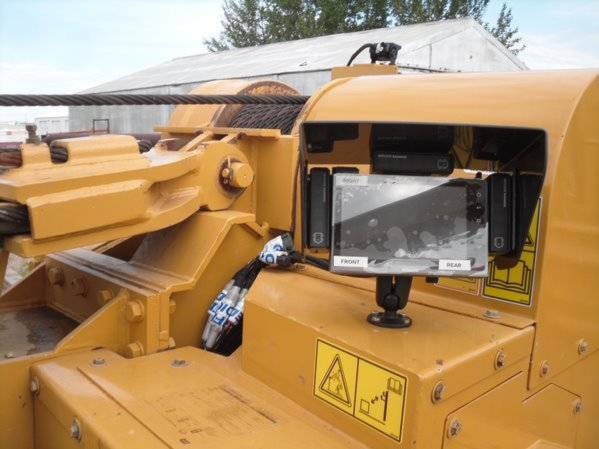When Coastal GasLink (CGL) contractors begin construction on the company’s LNG pipeline, their heavy equipment will be fitted with safety technology never before used in British Columbia on a pipeline project of this scope.
The tech is a camera and radar system developed by a British company called Brigade Electronics.
Dwayne Folk, Brigade’s western Canada sales manager for oil and gas, explained it is similar to consumer technology most people are already familiar with.
“You get a signal on your radar and that can trigger your camera to come on and it will tell you something is there,” he explained. “It’s basically like your car when you’re backing up. Your camera comes on and then you get the beeper.”
It has been modified for industrial use, however.
“We use radar instead of ultrasonics because radar’s more robust and will go through mud and snow and ice and stuff like that, where your ultrasonics won’t.”
Michael Gibb, CGL director of health, safety and security said the systems are intended to be an enhancement to existing safety protocols.
“While the new radar systems aren’t intended to be a replacement for every worker’s diligence and safety training, they’ll act as an added line of defence to busy and potentially dangerous worksites,” he said.
“Every day, at every stage of Coastal GasLink’s construction, safety is top of mind. It’s at the core of everything we do, and we’re always striving to improve standards and achieve our goal of a zero-incident workplace.”
The systems will be placed on all heavy machinery including dozers, excavators, side booms, rock trucks and loaders, the company said in a feature story on its website.
“The Safe Work Guidelines developed around the new system will be adopted by all prime contractors and subcontractors working on Coastal GasLink work sites before August 1, and are applicable to all heavy equipment utilized on the project with the exception of equipment used during logging and clearing activities,” the article stated.
Although the tech is new to B.C. pipeline projects, Folk said it is proven technology.
“It’s used throughout the world,” he said. “We have lots of it in mining applications in different parts of the world. We started this six or seven years ago with Enbridge… in the pipeline world, it started as a pilot back then and it’s proven to be very effective for helping prevent people from getting run over or people being in contact with equipment.”
Preventing injury is not the only benefit, though, it also stands to save CGL money, Folk added.
“It’s also proven really valuable in machine-on-machine contact or just generally property damage incidents,” he explained.
“On a pipeline right-of-way, when the mainline construction is going, they’ll have 150, 200 pieces of heavy equipment running around and 900 guys, so there’s typically been a number of property damage incidents and near misses that would happen.”
While this project might be the first to use the tech, it will unlikely be the last.
“While the technology is relatively new, it has recently been adopted by the Canadian Energy Pipeline Association (CEPA) as an industry best practice, and has shown to reduce the number of worksite incidents significantly,” the Coastal Gaslink article said.
